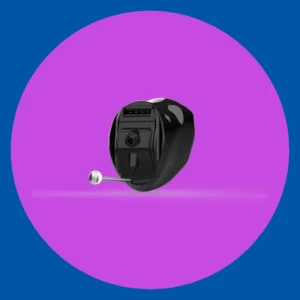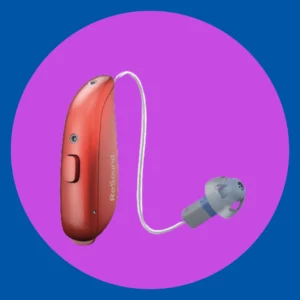Exploring Small Hearing Aids
Small hearing aids make better hearing feel natural. They sit discreetly. The sound is clear. They fit into busy days with ease. If you want help that stays out of sight, you are in the right place. We will explore small hearing aids across two popular paths. One sits deep in your ear canal. The other hides behind your ear with a thin wire. Both choices can work well. Your lifestyle and hearing needs guide the best match. For a quick tour of modern tools, see the latest features in hearing aids.
What Counts As “Small Hearing Aids” Today?
Small hearing aids fall into two main groups. Each aims for a low profile and high comfort.
- Invisible-in-the-Canal (IIC) and Completely-in-Canal (CIC).
These custom devices sit deep in the canal. IIC sits deepest. CIC sits slightly shallower. Both aim for near invisibility. - Micro Receiver-in-Ear (microRIE) or microRIC.
These mini behind-the-ear styles stay tiny and light. A thin wire leads to a small speaker in the ear.
Both styles help you hear more naturally. IIC and CIC use your ear’s shape to gather sound. microRIE packs more tech into a small shell. It adds Bluetooth, rechargeability, and strong performance in noise.
Who Benefits Most From Small Hearing Aids?
Small designs suit many people. They work best when needs are clear.
- You want true discretion.
IIC and CIC hide deep in the canal. They keep attention on you, not your devices. - You live on calls and streaming.
microRIE adds Bluetooth, app control, and long battery life. It fits busy, connected days. - You face frequent background noise.
microRIE uses twin mics and smart beamforming to lift speech in restaurants and meetings. - You prefer zero eyewear interference.
IIC and CIC stay inside the ear. Glasses and masks never touch them. - You value simple handling.
microRIE is easier to insert, clean, and charge. Buttons are larger. Chargers are simple. - Your hearing loss range.
IIC and CIC fit mild to moderate losses well. microRIE covers a wider range, up to severe.
Treating hearing loss supports brain health and daily function. Early use of hearing aids is linked with better outcomes; learn more in the USF Health clinical trial overview.
IIC vs microRIE: The Small Hearing Aids Snapshot
Here are the key differences that matter day to day.
| Category | IIC / CIC (In-Canal, Custom) | microRIE / microRIC (Mini Behind-Ear) |
| Visibility | Virtually invisible deep in the canal. | Very discreet behind the ear with a thin wire. |
| Fit Type | Custom-molded to your ear canal. | Mini shell with dome or custom tip options. |
| Battery | Usually disposable size 10 in IIC. Short life. | Mostly rechargeable. All-day use is common. |
| Bluetooth Streaming | Rare in IIC due to size limits. | Standard on most models. iPhone and Android support. |
| Directionality in Noise | Limited by single mic and deep position. | Strong multi-mic beamforming for restaurants and groups. |
| Wind Noise | Excellent due to deep placement. | More wind exposure on the ear. App features help. |
| Handling | Very small. Can be tricky to insert and clean. | Easier to handle. Larger buttons and simple chargers. |
| Moisture/Wax Exposure | Higher exposure in the canal. Pro cleanings help. | Electronics sit outside the canal. Often more protected. |
| Power Range | Best for mild to moderate loss. | Fits a wider range up to severe loss. |
| Controls | Few or no manual controls on the shell. | On-device buttons and robust app controls. |
| Telecoil / Auracast | Rare in IIC due to space. | Available on many models for public venues and broadcasts. |
| Best Match | Maximum discretion and wind comfort. | Best balance of features, power, and ease of use. |
If you want the smallest look possible, start with IIC or CIC. If you need stronger noise performance and streaming, microRIE usually leads.

The Smallest “Invisible” Options: Custom IIC and CIC
IIC and CIC place the shell deep in the ear canal. That depth keeps them out of sight. The fit is custom. The goal is comfort, stability, and a natural sound path.
Phonak Lyric (IIC, Extended-Wear)
- Worn 24/7 for months at a time.
- Placed by a professional near the eardrum.
- No daily insertion, no charger, no streaming.
- Ideal if you want constant help with zero handling.
Phonak Virto Titanium / Infinio IIC
- Medical-grade titanium shell allows a thinner, smaller build.
- Custom-molded for a deep, stable fit.
- Size 10 disposable battery.
- A strong pick when you want the tiniest removable custom device.
Starkey Genesis AI IIC / CIC
- AI-driven sound processing adapts to changing scenes.
- CIC can offer more options than the smallest IIC.
- IIC focuses on discretion first.
- A smart choice for tiny size with advanced processing.
ReSound Nexia IIC
- Ultra-small custom fit with iSolate nanotech moisture protection.
- Natural sound from deep canal placement.
- Prioritizes size and simplicity over streaming.
Want help comparing brand families? See this concise ReSound vs Starkey comparison.

The Smallest “Behind-The-Ear” Options: microRIE / microRIC
microRIE keeps the case tiny and light behind the ear. A thin wire leads to a speaker in the canal. This small shell still fits big features: rechargeable power, Bluetooth streaming, robust directionality, and telehealth support.
ReSound Vivia microRIE
- Miniature rechargeable design built for all-day wear.
- AI/DNN sound processing supports speech in complex scenes.
- Full Bluetooth connectivity and Auracast readiness.
- A top pick when you want tiny size without losing features.
Starkey Genesis AI mRIC
- Rechargeable with fast speech optimization.
- Edge Mode for on-demand clarity in tough noise.
- Optional wellness tools like fall alerts and activity insights.
- Great when you want simple controls with smart boosts.
Unitron Moxi (microRIC)
- Comfortable microRIC fit with easy daily handling.
- Rechargeable battery and reliable Bluetooth streaming.
- Flexible personalization through the current platform.
- A balanced choice for first-time wearers who want simplicity.
Phonak Audéo Family (micro-style RIC)
- Strong speech focus with multi-mic directionality.
- Tap control and stable Bluetooth connections.
- Robust rechargeable options for long days.
- Explore the Phonak Audéo overview.
Small Model Shortlist: Tiny Form, Real-World Features
This brand-by-brand snapshot helps narrow choices fast.
| Brand | Model | Style | Rechargeable | Bluetooth | Directionality Tier | Telecoil | Auracast | Standout | Best For |
| Phonak | Lyric | IIC (extended-wear) | No | No | Natural pinna cues | No | No | 24/7 wear with zero handling | Maximum invisibility, busy lifestyles |
| Phonak | Virto Titanium / Infinio | IIC | No | No | Essential processing | No | No | Ultra-thin titanium shell | Deep custom fit, tiny canal |
| Starkey | Genesis AI IIC | IIC | No | No | AI scene analysis | No | No | Fast adaptive clarity | Discretion with smarter processing |
| Starkey | Genesis AI mRIC | microRIC | Yes | Yes | Advanced beamforming | Optional | Select models | Edge Mode quick boost | Frequent noise, streaming |
| ReSound | Nexia IIC | IIC | No | No | Essential processing | No | No | iSolate nanotech protection | Natural sound, simple use |
| ReSound | Vivia microRIE | microRIE | Yes | Yes | Premium beamforming | Optional | Yes (select) | Tiny, full-feature package | Smallest look with features |
| Unitron | Moxi (current platform) | microRIC | Yes | Yes | Advanced beamforming | Optional | Select models | Easy handling and comfort | First-time wearers, everyday ease |
Patterns emerge quickly. IIC focuses on invisibility and a natural sound path. microRIE focuses on connectivity, battery life, and speech-in-noise performance.
Small Hearing Aids In Real Life: Comfort, Masks, Glasses, Hats
IIC and CIC sit entirely in the canal. They never bump glasses, hat brims, or mask loops. Sweat and wind are also less of an issue because the microphones sit deep. microRIE devices are tiny, yet can brush a frame or mask band. Fit matters here. We adjust receiver length and dome style to avoid contact. A quick follow-up visit can fine-tune comfort for your daily routine.
Handling, Cleaning, And Durability
Small devices need simple habits to stay reliable.
- Daily wipe. Use a dry cloth on the shell or case.
- Wax care. Replace wax guards as directed.
- Moisture protection. A drying jar or electronic dryer helps after sweaty days.
- Chargers and cases. For microRIE, keep contacts clean and the case closed.
- Pro support. IIC and CIC benefit from periodic deep cleans and fit checks.
Curious what’s coming next to keep tiny devices tough and smart? Skim our take on innovation trends.
Noise Performance: Restaurants, Meetings, And Outdoors
Noise is the daily test. microRIE models use two microphones and beamforming. They aim at speech and soften clatter. That helps in restaurants, meetings, and group chats. IIC models live deeper in the canal. They ride your ear’s shape for a natural sound path. Wind is less of a problem there. If noisy venues top your list, see our picks for best for noisy places.
Connectivity & Apps: Streaming, Calls, And Remote Care
microRIE shines here. You get Bluetooth streaming for calls, music, and TV. Many pair with both iPhone and modern Android. Tap controls can answer calls or trigger a quick clarity boost. Remote care lets us fine-tune settings without a visit. IIC models keep things simpler. They often skip streaming to stay tiny. Curious how two small ReSound lines compare? Read Vivia vs Nexia.
Choosing Between Invisible IIC And microRIE: A Quick Decision Guide
Choose IIC if you prioritize:
- Absolute discretion in all settings.
- Minimal wind noise outdoors.
- Zero interference with glasses, masks, or headsets.
- A custom fit that locks in place.
Choose microRIE if you prioritize:
- Bluetooth streaming and hands-free calls.
- Strong performance in restaurants and meetings.
- Rechargeable convenience with all-day battery life.
- Easier handling and a wider range of hearing loss.
Everyday scenarios:
- Fitness buff. You run outdoors and wear sunglasses. IIC can minimize wind and frame contact.
- Frequent diner. You meet friends in lively restaurants. microRIE gives you multi-mic directionality.
- Remote worker. You live on calls and video chats. microRIE supports streaming and app control.
- Caregiver. You prefer simple charging and bigger buttons. microRIE is easier to manage.
How We Fit Small Hearing Aids For You
- Conversation and goals. We learn about your day, noise, and tech needs.
- Hearing evaluation. We test thresholds, speech understanding, and comfort levels.
- Style selection. We match IIC/CIC or microRIE to your priorities.
- Custom steps. For IIC/CIC we take an impression or a scan. For microRIE we size receivers and domes.
- Real-ear verification. We measure sound at your eardrum for accuracy.
- App setup and training. We personalize streaming and controls if available.
- Follow-ups. We fine-tune fit, comfort, and clarity after real-world use.
- Ongoing care. Cleanings, wax management, updates, and quick repairs when needed.
FAQs About Small Hearing Aids
Are small hearing aids as powerful as bigger ones?
microRIE covers a wider range, often up to severe loss. IIC fits mild to moderate loss best.
Can I get Bluetooth in the smallest hearing aids?
IIC usually skips Bluetooth to stay tiny. microRIE offers full streaming.
Will they help tinnitus?
Yes. Amplification can reduce tinnitus awareness. We also offer sound therapy options.
Are they comfortable all day?
Yes, when fit correctly. IIC uses a custom shell. microRIE uses light cases and soft tips.
Do they work with glasses or masks?
IIC sits inside the ear and avoids contact. microRIE is tiny but may touch frames if not fitted well.
Are rechargeable invisible models available?
Rechargeable batteries are common in microRIE. IIC remains too small for most rechargeable options.
How long do small batteries last in IIC/CIC?
Size 10 batteries are tiny. Expect several days, depending on use and settings.
Can I exercise or travel with them?
Yes. Use a dryer or case after sweat or humidity. Bring extra batteries for IIC.
What if I have ear wax issues?
We plan for wax guards, venting, and routine cleanings. Regular checks keep tiny devices reliable.
What if my manual dexterity is limited?
microRIE is easier to handle. Larger buttons and a simple charger reduce fuss.

Ready To Try Small Hearing Aids?
You deserve clear sound in a design that fits your life. Book a free consultation today. Enjoy our price match and a 10-day trial on hearing aids. Contact Stanford Hearing to get started.
